The 2018 Micro LEDforum, hosted by LEDinside, ended on 12 July. This time, experts from various fields were invited to share the six bottlenecks in the Micro LED manufacturing process. In the mass transfer section, this time we invited Uniqarta, SelfArray, eLux, QMAT and KIMM to talk about the features of various transfer technologies and future potential.
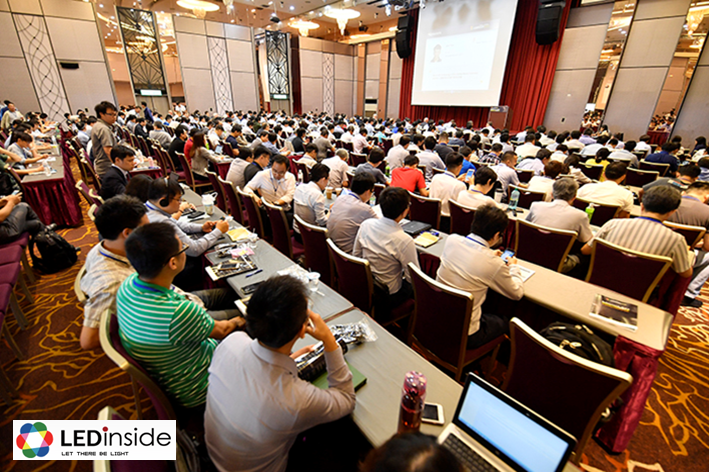
(Micro LEDForum 2018; Taipei Taiwan)
Roger Chu, the research director of LEDinside, mentioned in the speech that because all mass transfer technologies have different characteristics, their solutions for displays of varying specifications and sizes will be different. Therefore, exploring the feasibility of various mass transfer technologies will bring more opportunities of breakthrough for the overall industry.
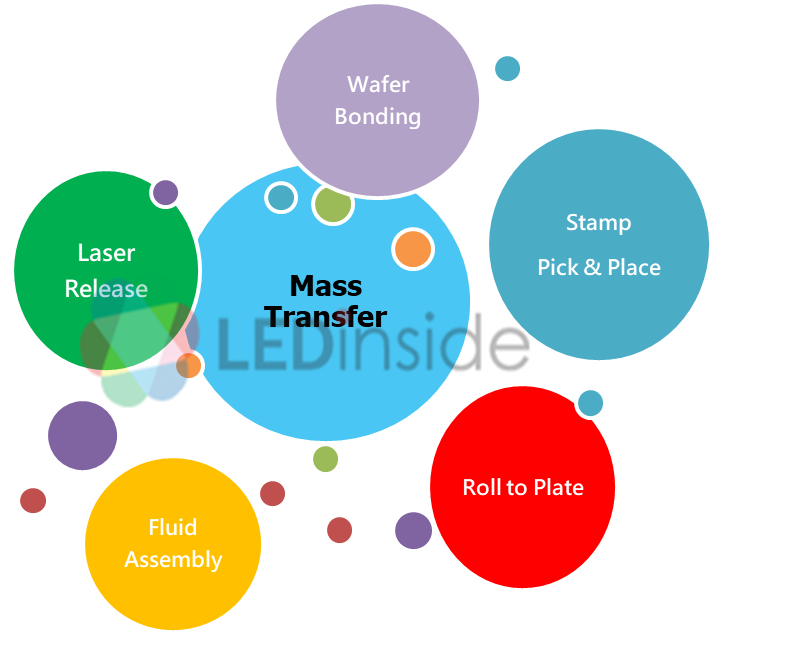

(Source: LEDiniside)
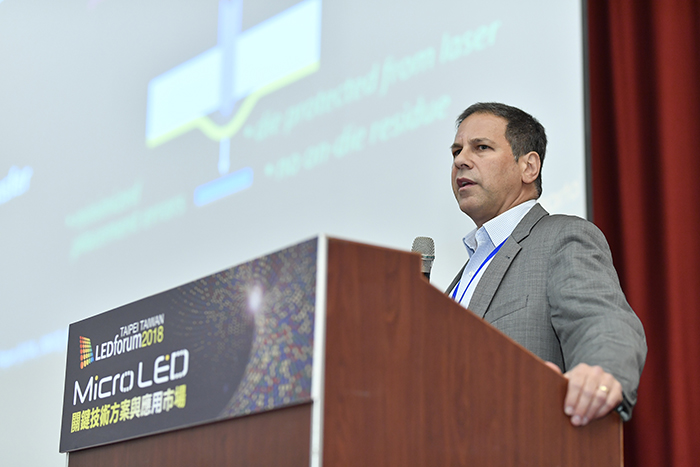
(Ronn Kliger, Co-founder and CEO of Uniqarta)
Uniqarta, the American startup company, said that compared to the traditional pick and place transfer technology, the speed and efficiency of Uniqarta mass transfer solution will increase massively. The current pick and place technology can transfer 10,000-25,000 units per hour. Producing a display requires around 2-15 weeks. Yet, the laser transfer technology developed by Uniqarta can transfer dies through single-beam mode or multi-beam mode. Ronn Kliger, the CEO and co-founder of Uniqarta, demonstrated a video clip to show how fast the transfer could be. With the die size of 130μm*160μm, the method can achieve a transfer rate of 14 million units per hour.

(Francois J. Henley, President and CEO of Tesoro Scientific/QMAT)
Another representative for laser transfer is Tesoro & QMAT. QMAT uses integrated layers within the EPI growth substrate to quickly and massively transfer Micro LEDs from the EPI source substrate to the target substrate with BAR (Beam-Addressed Release). In particular, in order to ensure zero ppm defect and high throughput in the mass transfer process, Tesoro has proposed PL/EL testing solutions and compatible laser-assisted release architectures to ensure that the Micro LEDs are good dies before they are transferred without loss of throughput. Through this way, the time for subsequent repairs and processing costs can be reduced.
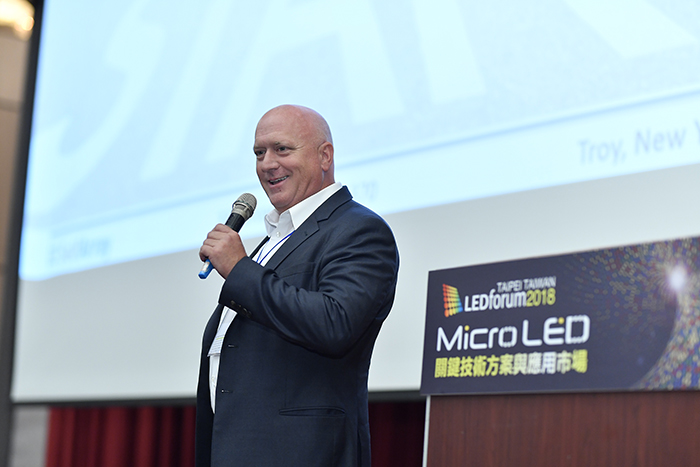
(Dr. Clinton Ballinger, CEO of SelfArray)
Besides laser transfer solution, SelfArray, another American startup company, shared its Directed Self-Assembly (DSA) technology which uses diamagnetic levitation to align LEDs automatically. The technology would first cover LED dies with a thin layer of pyrolytic graphite, and then place them on a vibrating magnetic stage where with the magnetic field the LEDs would quickly orient themselves into an array. Clinton Ballinger, the CEO of SelfArray, demonstrated the technology with 350*350 square μm flip chip LEDs through a video clip. SelfArray stated that the company is designing LEDs smaller than 150 μm for future testing. Once the technology of directed self-assembly becomes more mature, it would take only a few minutes to produce a 4K TV.
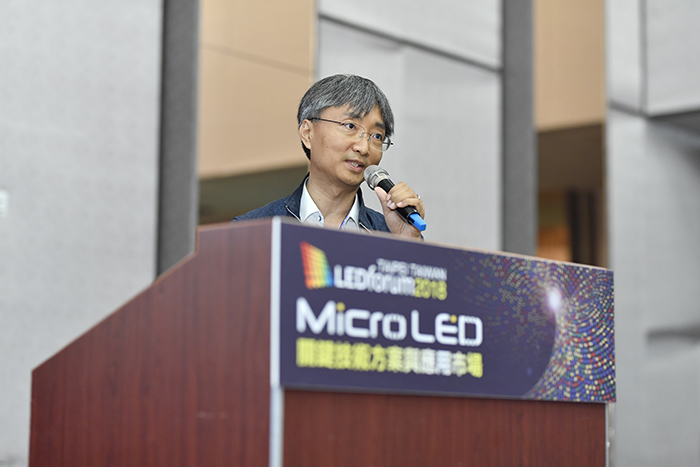
(Jae-Hyun Kim, Head of Applied Nano-Mechanics Department of KIMM)
The roll-to-plate transfer technology has been developed by KIMM. Through roll-to-plate method, TFT and LED elements are transferred to the substrate, completing stretchable AMLED display. With this technology, the speed of mass transfer can be 10,000 times faster than the conventional manufacturing process.
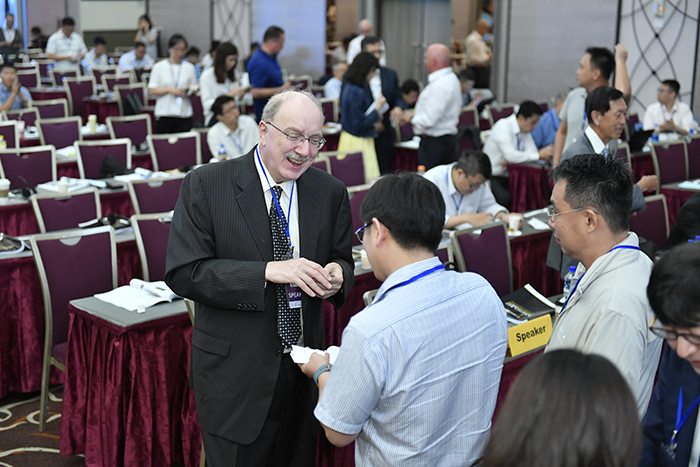
(Paul Schuele, CTO of eLux, Inc.)
In this forum, we invited Paul Schuele, the CTO of eLux. eLux mainly focuses on the fluidic assembly method, which involves using fluid suspending liquid as a medium to pump and drag Micro LEDs, which are then captured by the substrate at precise positions. It is a method with low cost and high speed.
Last year, Foxconn became the largest shareholder of eLux through its subsidiary CyberNet, and today eLux is making a breakthrough in Micro LED technology and will continue to completely assist Foxconn in the development of Micro LED in the future. eLux also told LEDinside that it will work with AOT on backlighting and another Foxconn's subsidiary, Innolux, on backplane in the future. eLux also revealed that the next stage will develop towards RGB displays. It would take at least three years to move into large display screens.
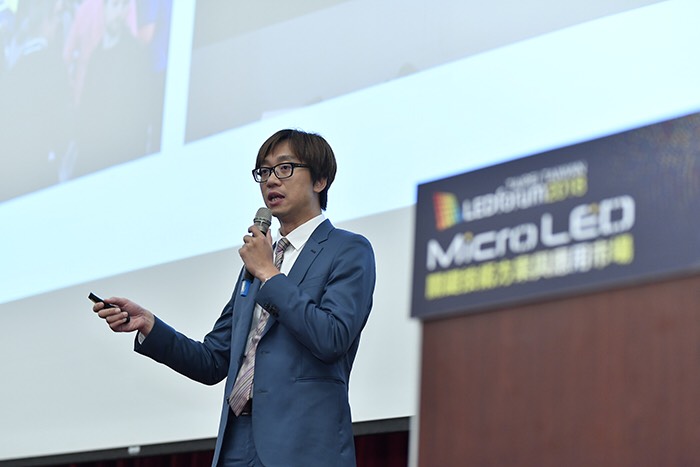
(Kerry Huang, Manager of micro-LED Dept. of Macroblock)
Finally, as the only driver IC manufacturer for this forum, Kerry Huang, Manager of Micro LED Department of Macroblock, used HDR10 in the TOP DOWN way to bring out the advantages of micro/mini LEDs in LED displays. Compared to traditional SMD LEDs, micro/mini LEDs have a wider viewing angle, higher luminous efficacy and higher pixel density. Yet, to be able to fully play the characteristics of micro/mini LEDs, they still need drive IC assistance, for example, true 16-bit PWM can increase the contrast ratio to 25,000:1. Highly integrated driver ICs integrate more channels with other peripheral ICs to allow for smaller pitch spacing and higher pixel density. For the detection of dead pixels in the production of micro/mini LED displays, AOI can only detect if the LEDs are missing, if they are successfully placed in alignment or if the dies are broken, but it is not easy to determine if the pad is properly engaged. The LED error detection function provided by Macroblock’s SHARE-I/O can make up for AOI deficiencies. Besides, the exclusive error prediction function can determine the impending failure of dies before burn-in, assisting maintenance in advance and reducing follow-up maintenance costs.
2018 Micro LED Next-Generation Display Technology Market Report- 3Q18- Transfer, Drive, Backplane and Applications
Micro LED Key Technology Analysis
• Micro LED Key Technology
• Micro LED Transfer Patent Development Trend
• Micro LED Backplane Application Trend
• Micro LED Drive Application Trend
Micro LED Transfer Technology Analysis
• Three Major Transfer Technologies Classification
• Micro LED Thin Film Transfer Technology Classification
• Pick and Place Transfer Technology Analysis
• Electrostatic Adsorption vs. Magnetic Adsorption
• Phase Change vs. Van der Waals Force
• Adhesion and Reaction Force vs. Electrostatic Adsorption and Reaction Force
• Chip Transfer and Flip vs. Solid Printing
• Fluidic Assembly Transfer Technology Analysis
• Fluidic Dispersion Printing vs. Fluidic Assembly
• Laser Printing Technology Analysis
• Laser Ablation vs. Laser Lift Off
• Laser Beam Multi-Chip Transfer vs. Multi-Beam Transfer
• Roller Printing Technology Analysis
• Roll to Roll Transfer Rohinni vs. KIMM
• Micro LED Product Application Specifications
• Micro LED Transfer Technology Selective Comparison
• Transfer Application Analysis- Digital Display
• Transfer Application Analysis- TV
• Transfer Application Analysis- Automotive Display
• Transfer Application Analysis- Mobile
• Transfer Application Analysis- Watch
• Transfer Application Analysis- AR / VR
Micro LED Backplane Technology Analysis
• Backplane Material Classification
• Hard Backplane- Glass Material Operating Principle
• Hard Backplane- Glass Material Property
• Hard Backplane- Glass Material Property Comparison
• Hard Backplane- PCB
• Hard Backplane- Si CMOS
• Flexible Backplane- Non-Optical FPC
• Flexible Backplane- Optical FPC
Micro LED Key Technology
• LED Drive Solution- Introduction of LED Driver
• LED Drive Solution- Importance of LED Driver IC
• LED Drive Solution- Relation between LED Voltage, Current and Luminous Flux
• LED Drive Solution- Comparison between Linear Drive and Switch Drive
• LED Drive Solution- Switch Control Technology Classification
• LED Drive Solution- Influence of Switch Control PWM Technology on the Change of LED Color Scale
• Display Drive Solution- Comparison between Active Matrix and Passive Matrix
• Display Drive Solution- Scanning Mode and Frame Rate
• Display Drive Solution- Fine Pitch Display Dead Pixels Analysis
• TFT Drive Solution- TFT Drive Architecture
• TFT Drive Solution- Analysis of Interference Factors Affecting Display Quality
• OLED Drive Solution- Passive Matrix / PMOLED
• OLED Drive Solution- Active Matrix / AMOLED
• Micro LED Drive Solution- Passive Matrix
• Micro LED Drive Solution- Active Matrix
• Micro LED Drive Solution- Micro LED Driver IC
Appendix: Micro LED Manufacturer Trend
• Mini/Micro LED Manufacturer Trend- Cell Phone, Automotive Display, TV and Gaming NB
• Mini/Micro LED Manufacturer Trend- Display
• Mini/Micro LED Manufacturer Layout Trend
Contact US:
|
Taipei:
|
|
|
Joanne Wu
joannewu@trendforce.com
+886-2-8978-6488 ext. 912
|
Grace Li
graceli@trendforce.com
+886-2-8978-6488 ext. 916
|




















